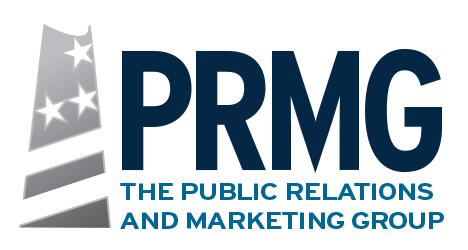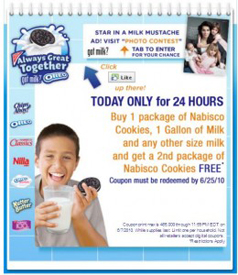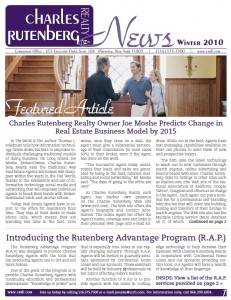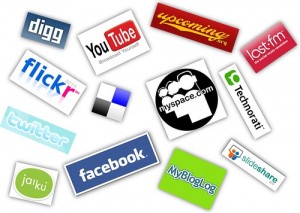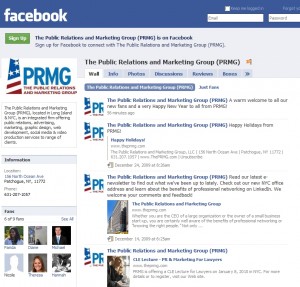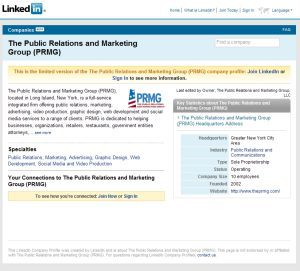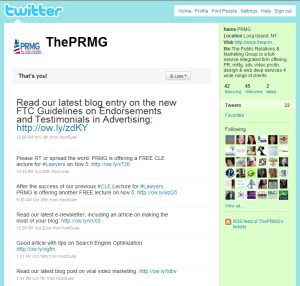Every business strives to increase profitability and remain relevant and competitive in their industry. In order to stay competitive in today’s business world, you must use some form of social media. Social media marketing and advertising techniques can help increase your revenues, communicate with customers and remain a competitive force in your field. With so many options out there, it is best to focus your attention and time on what is most beneficial to your business. For those interested in making professional connections, networking and reaching out to other businesses, LinkedIn is the site for you.
LinkedIn, the world’s largest business-oriented service, allows members to network and keep in touch with their business contacts. Businesses should think of LinkedIn as a giant networking event. This is especially beneficial for B2B industries. The site allows you to search its database for people at a company to whom you are somehow connected and send a virtual introduction through one or more immediate connections. LinkedIn helps build stronger personal relationships to facilitate more direct contact and business opportunities.
Always make sure that your LinkedIn business profile is as close to 100% complete as possible. Upload a professional photo, add to your network frequently and keep all business information and staff up to date on your business page. This makes it easier for other businesses, potential clients or partners to find your company.
Design your profile with your audience in mind. Don’t write lengthy descriptions of irrelevant jobs that you’ve worked for in the past; your LinkedIn page is not your résumé. (LinkedIn has a separate section for that.) Potential clients and business partners won’t benefit from seeing every minor detail of work experience from years ago. Focus on job titles, major achievements and the names of companies you’ve worked for. You may also add a video from YouTube to your business page.
Here are a few tips to make your LinkedIn page stand out and get your business noticed
Add video — To add a video, go to your company page and click on “Services” at the top. Select “Add a Product or Service,” then scroll down to the bottom of this page to step 10. Here, you may add your video, a title, keywords and the required fields. Another hint is to change your LinkedIn URL. When you create a business profile on LinkedIn, you’re given a random URL. To enhance search engine optimization and boost Google rankings, you can change the URL to something simpler, like your business’ name. You may customize your URL here: http://www.linkedin.com/profile/public-profile-settings.
Make connections — The more connections you have, the greater your opportunities become. One tip is to use the LinkedIn toolbar for Outlook to easily invite all of your Outlook contacts to connect with you. You may also export your LinkedIn contacts to Outlook or your Gmail address book by saving the details of your connections as a CSV file. You can then import this file into any other email program.
Advertise — There is also the potential for advertising on LinkedIn. You can target your audience based on company size, industry, gender and geography. (See our Advertising Spotlight for details.)
Use recommendations — Always give recommendations and testimonials to your contacts and request for them in return. These greatly enhance your profile by giving potential clients and business contacts a clear indication of the quality of your company’s work.
Communication and interaction are essential to your LinkedIn success. Update your status whenever there’s an update in your company. Likewise, keep an eye out for others’ statuses for something to start a conversation with or build a connection. Build and join groups and enhance the conversation with your expertise. You may communicate easily with group members by sending emails. This will portray your business to others as an expert and leader in the field. Send emails to group members, post conversations from the group to Twitter and Facebook, interact in the discussion area and pose and respond to questions. Use of the Answers feature spreads your name and profile around to people who otherwise wouldn’t have been exposed to it. By answering others’ questions, you show authority in your field and others may then look to you for advice. Answer only questions you can answer well. If you wrote an article, add it to one of the web resources boxes.
LinkedIn Today — A new feature the social media site has launched is “LinkedIn Today,” a program that surfaces the top headlines and stories being shared the most by members. Articles are grouped into different industries and the trending articles for each industry will appear at the top. This feature gives users an organized way to consume the top trending news in a particular industry. Having your company’s article appear on LinkedIn Today is a great way to gain exposure and share your professional insight. Make sure to post exceptional, thought-provoking content in your articles to maximize the chance of showing up at the top of this section.
LinkedIn Application for iPhones and Android Phones — Another LinkedIn breakthrough is that now users have the option of downloading the LinkedIn application for iPhones and Android-powered phones. You don’t have to be sitting in front of a computer screen to use LinkedIn. Professionals can now easily access and share industry news and articles and post headlines more directly from their cellular phone.
Stay active — Maintaining your LinkedIn page and checking for updates may be time-consuming, but it is necessary for success. Instead of logging in every time you want to check your profile, install the Google Chrome LinkedIn toolbar. This toolbar makes it simple to respond to contact invitations, comment on your contacts’ updates and more.
Visit The Public Relations and Marketing Group’s website for examples of social media performed on behalf of its clients.
